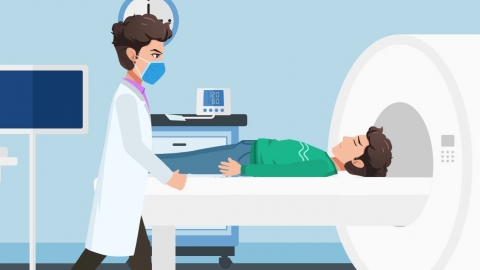What diseases can be detected by a CT scan of the stomach?
Generally, gastric CT is an imaging examination method. Gastric CT can detect diseases such as gastric ulcers, gastric polyps, gastric adenomas, gastrointestinal stromal tumors (GISTs), and gastric cancer. Detailed analysis is as follows:

1. Gastric Ulcer
Gastric ulcers are usually caused by long-term consumption of spicy or irritating foods or Helicobacter pylori infection. They can cause papillary elevations in the gastric mucosa and may lead to symptoms such as acid regurgitation or heartburn. CT examination can reveal inflammatory changes such as swelling, thickening of the gastric mucosa, and ulcers.
2. Gastric Polyps
Gastric polyps may be caused by genetic factors or unhealthy dietary habits, leading to space-occupying lesions in the stomach. CT examination typically reveals elevations on the surface of the gastric mucosa, which are characteristic features of gastric polyps. If the polyps are large or have malignant potential, further treatment may be required.
3. Gastric Adenoma
Gastric adenoma is a tumor arising from the epithelial cells of the gastric mucosa, mainly composed of hyperplastic gastric mucous glands. CT examination typically reveals thickening of the gastric fundus or gastric wall, which is characteristic of gastric adenoma. If the adenoma is large or has malignant potential, timely surgical removal is required.
4. Gastrointestinal Stromal Tumor (GIST)
Gastrointestinal stromal tumors originate from the mesenchymal tissues of the gastrointestinal tract and may be caused by genetic mutations or environmental influences. CT examination can determine the size and location of the tumor, providing evidence for the diagnosis and treatment of GISTs. This type of tumor may cause symptoms such as fatigue and weight loss.
5. Gastric Cancer
Gastric CT plays an important role in diagnosing gastric cancer. Gastric cancer is a malignant tumor that may be caused by Helicobacter pylori infection or precancerous lesions, leading to symptoms such as gastric pain and gastrointestinal bleeding. CT examination can assess the extent of the lesion and determine whether metastasis has occurred, providing important reference for the diagnosis and treatment of gastric cancer.
During the CT scanning process, patients should remain quiet and avoid speaking or moving to prevent affecting image quality.









